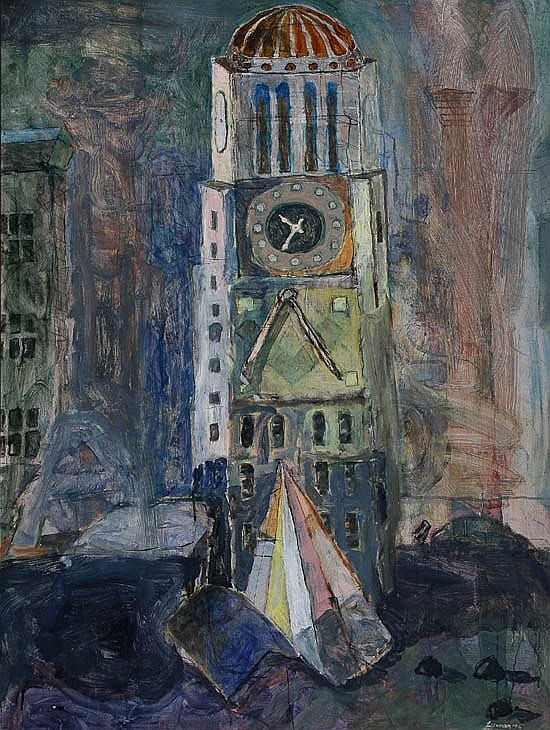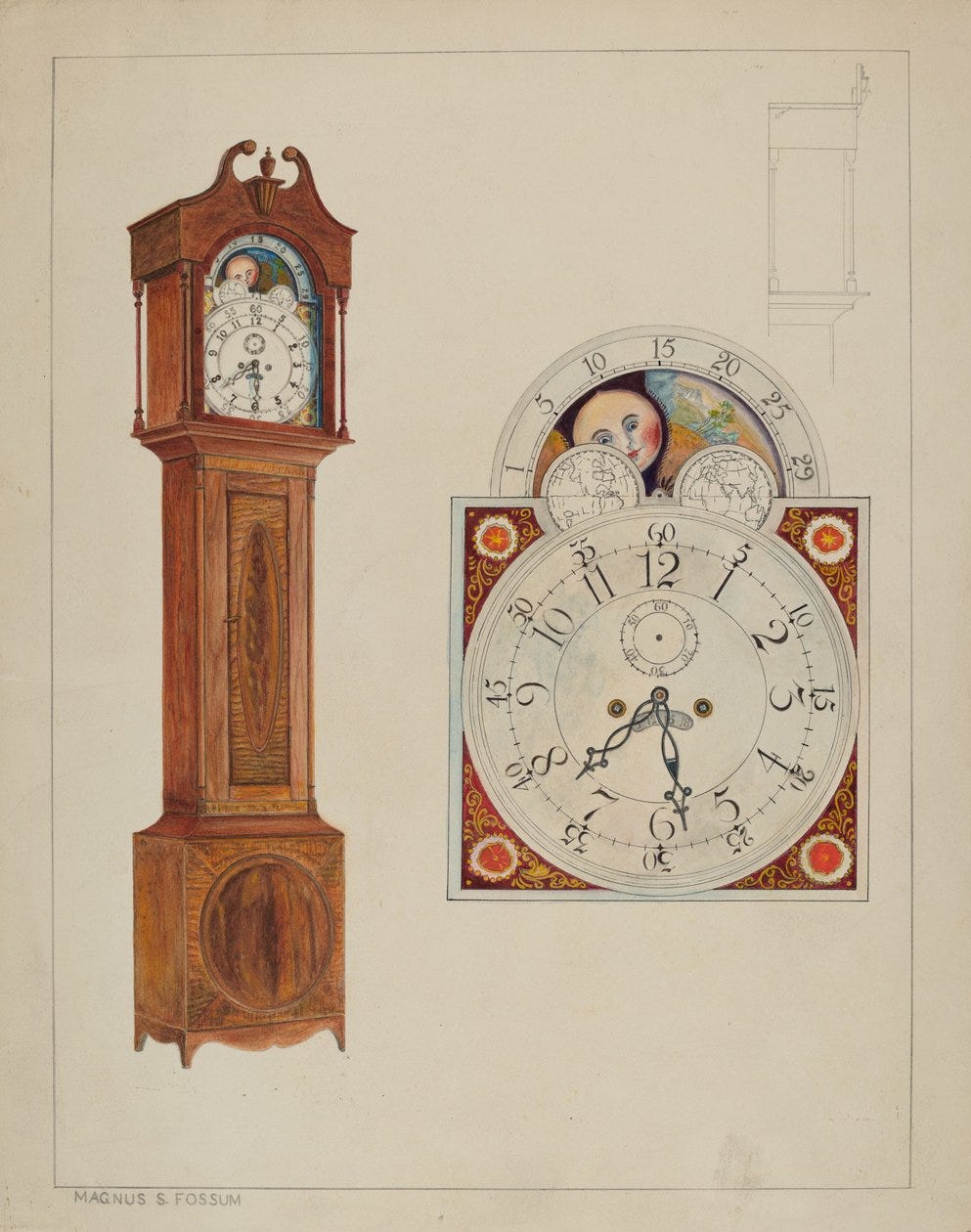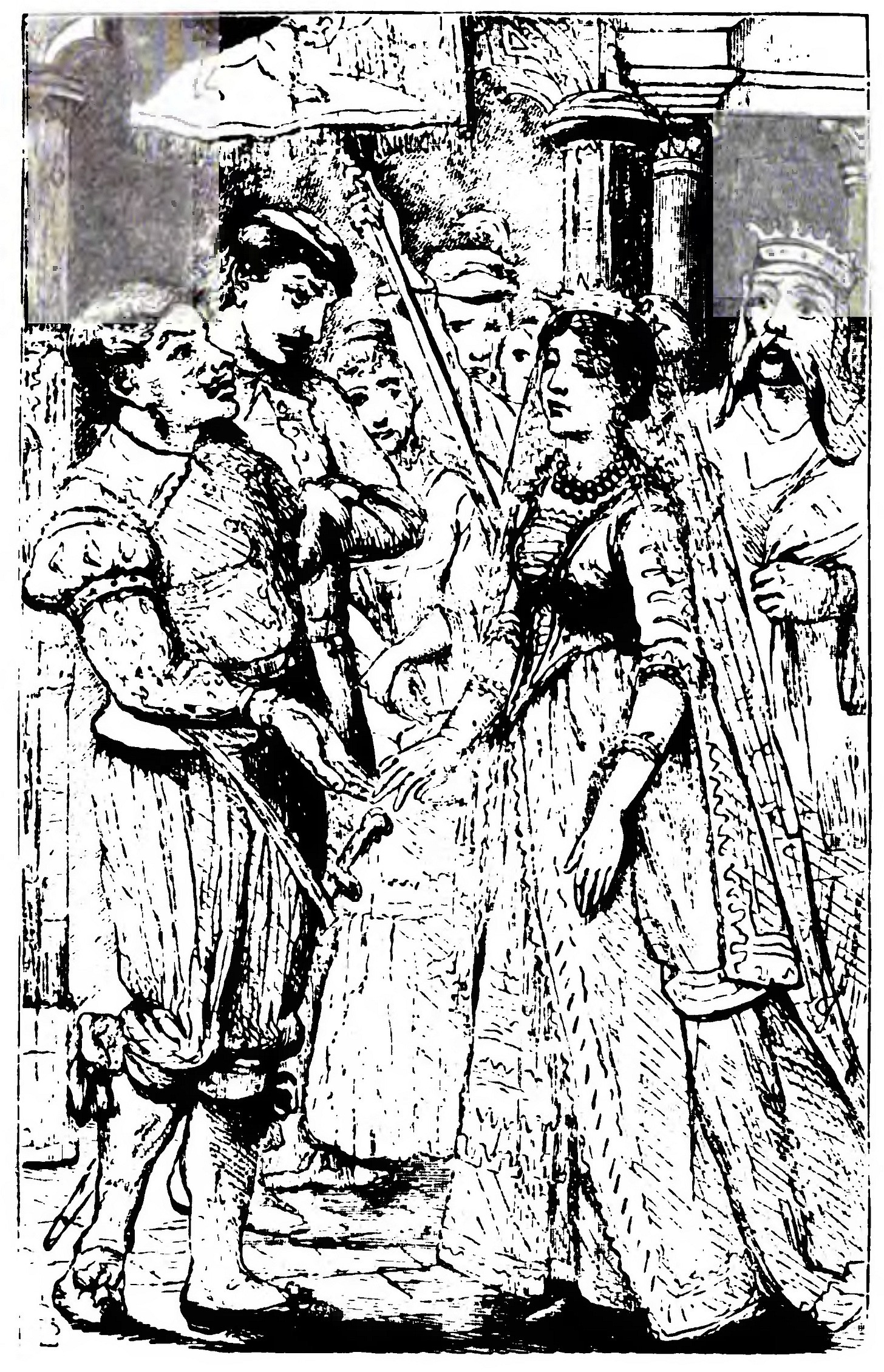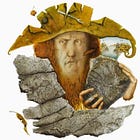Atonement as the Most Incredible Thing
Hans Christian Andersen’s “The Most Incredible Thing”
Click the link above to read “The Most Incredible Thing” by Danish author Hans Christian Andersen (1805–1875).
Although it would be hard to argue that Hans Christian Andersen wrote this story intentionally to teach us the gospel, he was a Christian, and the ideas of fall and atonement were part of his worldview. Whether it was intentional or not, it is easy to read “The Most Incredible Thing” as a broad, narrative retelling of the Creation, the Fall, and the Atonement—the three pillars of eternity taught by (among others) Elders Bruce R. McConkie (The Three Pillars of Eternity) and Russell M. Nelson (Constancy amid Change).
Creation, the first pillar, could be represented by the beautiful clock that the artist makes. Fall, the second pillar, could be represented by the clock’s destruction. And Atonement, the third pillar, occurs when the clock rises up and avenges the one who destroyed it, bringing peace to the kingdom. Although you could argue that this is an allegory, I think the story ends up being more complex than that. The clock could be seen to represent several things at different points in the story, while the meaning of “the most incredible thing” keeps evolving into something new.
If we continue with our task of looking at what each of these fairy stories can teach us about Atonement, we see how the most incredible things in this story build upon one another and offer us insights into the grand, enabling purpose of the Atonement for everyone.
And this story really is about a general everyone. More than the other stories we have read, this story is about a whole people, an entire kingdom. There are no named characters in the story; we don’t have Snow or Tam Lin or even “The Beast” to follow. There is an artist, a bony fellow, judges, boys, and a princess, but most of the time, the individual characters are not the point. They are not going on individual journeys but playing roles in a story about a communal journey.
This story is about the people of the kingdom as they get together to accomplish the task of discovering the most incredible thing. The prize is the princess and half the kingdom. And yes, the sexism is strong in this story. In addition to portraying a woman as a prize, it also seems that only men are permitted to compete at all. The story also contains racism. In many glaring ways, the people in this kingdom don’t live up to the values of our modern world, which means that they are, in all honesty, a lot like us.
Right away, we see that they have very mundane ideas as to what things are incredible. They eat and drink in large amounts, spit on their backs, and hold an exhibition where people bring incredible things to display. Most of the things done in the contest aren’t impressive, but, among all the things present in this very short story, four of them are declared by the narrator to be the most incredible, and if we look at each of those incredible things as Atonement metaphors, they can offer us new ideas and insights.
The First Incredible Thing: Atonement as Creation
The first incredible thing is a clock found on display at the exhibition.
This clock is an “extraordinary contraption, outside and in. . . . People said that nothing so incredible had ever before been seen.” The people of the kingdom decide that the creator of this incredible clock wins the prize. With its detailed displays at the chimes of the hours, each one demonstrating the works of God and man throughout history, this clock can serve as a vehicle for all of creation, that first pillar of eternity. The clockmaker, then, would be a vehicle for Christ as the creator. Just as the clockmaker painstakingly built the intricate clock, so Christ painstakingly created the earth and all that is in it.
It is not surprising that the people found the clock to be the most incredible thing, just as it isn’t surprising that so many people in life view the creation of the universe as the most incredible thing. And creation is a part of the plan of salvation—that first pillar. But creation is also a part of Atonement. If we try to look at each of these incredible things as metaphors for Atonement, what does it look like if Atonement is creation?
This metaphor—that Atonement is creation and re/creation—has received some attention recently in the work of Adam Miller, who argues in Mormon: A Brief Theological Introduction that God’s work is to create and re/create the world continually, and that “Christian discipleship is the work of willingly participating in the re/creation of the world” (37). If we embrace this idea, our perception changes and we see God’s ongoing creation of our world and lives as miraculous. We see our lives and losses differently. This worldview opens up our lives to seeing the tender mercies of God as we see his creation and re/creation every day.
The Second Incredible Thing: Atonement as Fall
The story could end here. Many fairy stories are as short or shorter than this first section of the story, but Andersen continues. Another contender steps up to challenge the artist. The bony man destroys the clock, smashing it to smithereens. When the artist’s intricate and beautiful creation is sawn asunder, the people of the kingdom redefine what is most incredible. “‘To destroy such a work of art!’ said the judges. ‘Why it’s the most incredible thing we’ve ever seen.’ And the people said so too.” The prize is taken from the clockmaker and given to the destroyer.
This moment could be seen as a representation of the Fall, and it is an unsatisfactory turn. The clock is beautiful, and seeing it destroyed doesn’t please anybody.
I think we can all agree that fall is not Atonement, but if we look closely, we also see that there can’t be an Atonement without a fall, for then, what need is there for an Atonement? Nephi answered:
And now, behold, if Adam had not transgressed he would not have fallen, but he would have remained in the garden of Eden. . . .
Wherefore they would have remained in a state of innocence, having no joy, for they knew no misery; doing no good, for they knew no sin.
But behold, all things have been done in the wisdom of him who knoweth all things.
Adam fell that men might be; and men are, that they might have joy. (2 Ne. 2:22–25)
This is an important feature of Atonement. It is not possible without a fall. There can be no restoring Snow White if she doesn’t first eat the apple. There could be no justification, healing, or reconciliation for anyone who hasn’t first broken the law, become wounded, or become estranged. So while Atonement is not fall, fall is a necessary prerequisite to it. It is the second pillar of eternity, equal to the others. Without it, there can be no joy, no good, no growth.
And the destruction of the clock is an incredible thing. Not in the sense that it is a difficult act to perform, a clock—especially a fine-tuned, hand-crafted object of mechanical complexity—is fairly easy to destroy. But it is incredible that the bony man is victorious—that he demonstrates power over something great and wonderful. “‘I did that,’ said the lout. ‘My work beat his, and bowled you over, all in one stroke. I have done the most incredible thing.’” When they offer the destroyer the prize for his actions, the people follow a fairly common worldly philosophy that “might makes right,” a belief that power, the ability to do something, is more important than the morality of the action performed.
The Third Incredible Thing: Atonement as Victory over Evil
I am happy that Andersen doesn’t end the story there. Might does not make right, and fairy stories feature miraculous endings where justice is often meted out without mercy. Near the end of the story, the clock performs the third incredible thing when it returns and defeats the bony man. This is the first indisputable magical act of the story. It is as surprising as it is miraculous. And while early on in the story I thought that the artist represented Christ and the clock represented creation, this moment changes the metaphor. The clock becomes a character in the story, and we see it taking on the role of Christ. Even though the destroyer has the power to bruise the clock’s proverbial heel, the clock has the power to crush the destroyer’s proverbial head (Gen. 3:15).
This is formally Atonement, the third pillar of eternity, and we see it here demonstrated in a new way. The clock is re/created. He becomes a deliverer, terrible and mighty, like the God of the Old Testament. He comes and “with the breath of his lips shall he slay the wicked” (Isa. 11:4). If the bony man is Satan, then this is the prophesied moment when he shall be bound and “not have power to tempt any men” (D&C 101:28). It is a moment we yearn for, a moment when good triumphs over evil on a grand, universal scale, for all people.
Once again, we see a new side of Atonement. This is not the view of the Atonement we have spent most of this series discussing, a view where Christ ministers to individuals one at a time, healing and restoring them to wholeness. This is a bird’s-eye view of the forest. We are looking at it from a distance, not to see the unique veins of the leaves, but to see a whole mountainside. Here we see what it looks like when Christ enables us to “conquer Satan, and . . . escape the hands of the servants of Satan that do uphold his work” (D&C 10:5). This view of Atonement reveals Christ defeating Satan, the adversary, the very fountain of sin and death.
Once again, we could end the fairy story here. It would be even easier than before. After all, the clock was victorious. We have been through three incredible things, and the princess and half the kingdom are safe from the rule of the bony man. But thankfully, there’s more.
The Fourth Incredible Thing: Atonement as Collective Harmony
“Now,” the princess commanded, “summon the right man, the craftsman who made the work of art. He shall be my husband and my Lord.”
The clockmaker is awarded the prize, much to the relief of the princess, who, let’s face it, had a lot riding on this contest, and “everyone was happy for him, everyone blessed him, and there was no one who was envious.” Then, for the fourth time, the narrator declares that “that was the most incredible thing.”
Reading this story is a roller coaster. I experience constant whiplash with each new incredible thing I am presented with. This fourth incredible thing, however, is where I feel Tolkien’s “catch of the breath, a beat and lifting of the heart, near to (or indeed accompanied by) tears, as keen as that given by any form of literary art.” That final declaration is where I felt the greatest miracle has taken place. It is the miracle we saw in the Selfish Giant and Laura. A miracle that transforms the saved—in this case, the entire kingdom—into something new and better.
One day, the people of the kingdom are all competing to do the most incredible thing, eating and drinking themselves to death, spitting and fighting, and even cheering on the destroyer because of his display of power. Then, the next day, they are none of them envious. They are happy.
Can you imagine it?
The Nephites experience this in the Book of Mormon. They are overrun by Gadianton robbers, their chief judge murdered. “The people were divided one against another; and they did separate one from another into tribes, every man according to his family and his kindred and friends; and thus they did destroy the government of the land” (3 Ne. 7:2). The greater part of the people are wicked.
Thankfully, it doesn’t last. Like in our fairy story, an incredible thing happens. Christ comes. He brings healing and forgiveness, justice, mercy, and reconciliation, not just for the individual, but for the whole community. And a people who were recently full of inequality, greed, violence, and hatred become a people unified around the Savior—righteous and peaceful. “And they had all things common among them; therefore there were not rich and poor, bond and free, but they were all made free, and partakers of the heavenly gift” (4 Ne. 1:3).
As I get older and see the ways that we in our societies and even families choose to divide ourselves into tribes and embrace contention and greed, I long for this miracle. For the miracle Christ prayed for in the intercessory prayer, “That [we] all may be one; as thou, Father, art in me, and I in thee, that [we] also may be one in us: that the world may believe that thou hast sent me” (John 17:21).
After Christ comes to the Nephites, they all believe in him and unite around this belief. As a consequence, they have three hundred years of peace. These three hundred years serve as a witness to the unifying power of Christ. And while I still don’t feel like I adequately understand the enchanted forest of the Atonement, this fairy story does remind me that the transformations we have discussed in this series—restoration, justification, healing, reconciliation, and rebirth—are not only available to us as individuals but to our entire communities. The good clockmaker, hand in hand with his greatest creation, has the power to banish the destroyer and bring peace to everyone.
Careful readers will notice that even the bony man, who received his blow from the clock (a blow for a blow), was not declared dead in the story. Andersen never says the man died, that he was killed or slain, or even that he disappears like the clock. No, even he is included in the ending; even he is not envious.
Fiona and Terryl Givens write that “the work of Atonement [is] intended to bring about the healing and unifying of the entire human family” (144). President Russell M. Nelson, in his October 2024 conference talk bore testimony that “at [Christ’s] Second Coming, ‘the glory of the Lord shall be revealed, and all flesh shall see it together.’ That day will be filled with joy for the righteous!” That is the hope this story brings, that not only me, not only you, individually, but all of our families, friends, and communities will all feel this joy together. “For the earth shall be full of the knowledge of the Lord, as the waters cover the sea” (Isa. 11:9).
Retroactive Salvation
The miracle of Atonement is that it can reach everyone, through all time and space. It can reach those closest to us, but also our neighbors who think differently. It reaches refugees and soldiers, rock stars, and teachers. “Now, this restoration shall come to all, both old and young, both bond and free, both male and female, both the wicked and the righteous” (Alma 11:44).
Yet another miracle is waiting for those who access the Atonement, a retroactive salvation, a joy that radiates into the forest of the past and bathes each moment with new light. When I say that Atonement reaches all of time and space, I am not only talking about people from the past or future. I am not talking of a single moment in time when all will be right, but of a moment in time when all previous moments will have been right.
The Atonement brings the promise that each moment of the past, a past that contains sorrow and suffering, will come to be a part of the Atonement as well. When Christ will reach back to those moments of creation and re/creation, those moments of fall, and sanctify them, making them holy and whole, a part of the grand plan of eternity.
This is nowhere better expressed than in fairy stories. In fairy stories, happy endings erase the sorrows of the beginning and middle. Kate Bernheimer writes in “Fairy Tale is Form, Form is Fairy Tale,” that “Characters in fairy tales are always flat . . . they are not in psychological conflict. In a traditional fairy tale, a child who has escaped an incestuous advance does not become a grown-up neurotic.” The ending of “The Most Incredible Thing” wipes out the fallout of the earlier story. The people are truly happy, suffering no consequences from the violence they have experienced. C.S. Lewis writes in The Great Divorce:
That is what mortals misunderstand. They say of some temporal suffering, “No future bliss can make up for it,” not knowing that Heaven, once attained, will work backwards and turn even that agony into a glory. And of some sinful pleasure they say “Let me have but this and I’ll take the consequences”: little dreaming how damnation will spread back and back into their past and contaminate the pleasure of sin. Both processes begin even before death. The good man’s past begins to change so that his forgiven sins and remembered sorrows take on the quality of Heaven: the bad man’s past already conforms to his badness and is filled only with dreariness. And that is why, at the end of all things, when the sun rises here and the twilight turns to blackness down there, the Blessed will say “We have never lived anywhere except Heaven,” and the Lost, “We were always in Hell.” And both will speak truly.
This is not to say that we shouldn’t take suffering seriously, that we should hold back our love and our empathy because someday everything will be beautiful and nothing will hurt. Quite the opposite. Those who follow Christ should seek to alleviate suffering just as he did. But we can never win alone. We could make our world into a paradise where every person is known, loved, and happy. But we can never undo the past. We can never make what has been done right again. Only the Atonement can do that.
This is the most incredible thing—a wholeness that extends to all people and all moments. A promise that those who receive the Savior will have—even during their darkest moments—always been with him. A true happily ever after, and a happily ever before, and a happily ever always.
Chanel Earl is a writer—mostly of fiction—who currently teaches writing at Brigham Young University.
Art by Howard Lerner; Magnus S. Fossum (1888–1980); illustration from the first US publication of “The Most Incredible Thing” in The Riverside Magazine for Young People, September 1870.











